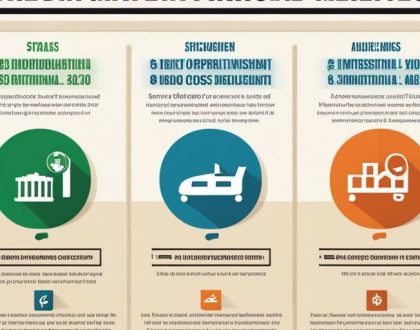Economic Impact of European Lotteries

In its 17th consecutive report, the European Lotteries (EL) has disclosed a significant financial contribution to society by its members in 2022. The report compiles data from 68 EL members, shedding light on various aspects of the lottery sector in Europe.
Year-on-Year Growth:
The standout revelation from the report is the impressive year-on-year growth of just over 11%, amounting to a staggering €22 billion contributed to society. This financial windfall has been hailed as a pivotal outcome, underscoring the vitality of the lottery sector in the region.
Allocation Breakdown:
The EL’s report meticulously breaks down the allocation of the €22 billion. Notably, 73% of the funds found their way into state budgets, reinforcing the lotteries’ role in supporting public finances. Additionally, 12% was earmarked for social and other societal purposes, demonstrating the broad impact of lottery funding. A further 9% was allocated to sports, 4% to culture and heritage, 2% to health, and a modest 0.4% to education.
Sports Betting Surge:
An intriguing highlight of the report is the significant growth in sports betting, registering a notable increase of over 7% compared to the previous year. This surge positions sports betting as the second-fastest-growing game category within the EL members’ base. The report also underscores the continued expansion of online operations, showcasing a growth rate exceeding 9%.
Total Gross Gaming Revenue:
The comprehensive report reveals that the total gross gaming revenue (GGR) across all gaming categories exceeded €38 billion, marking a commendable 6% increase from 2021. Draw Based Games (DBGs) emerged as the frontrunner, constituting 53% of the GGR. DBGs experienced a 3% growth compared to the preceding year. In contrast, instant games displayed a more modest 2% growth, making it the slowest-growing category in 2022.
Advertisement Restrictions Challenge:
An interesting revelation in the report is that over half of the EL members faced some form of advertisement restrictions, impacting various game categories, both online and offline. These restrictions pose challenges to the industry, prompting a need for adaptability and strategic planning.
Workforce Dynamics:
The EL members collectively reported a workforce of over 51,000 employees in the lottery sector, indicating a noteworthy 5% increase from 2021. Notably, the gender distribution among these employees was evenly split, with a 50% ratio between male and female workers.
The Role of Lotteries in State Budgets
The report underscores the pivotal role lotteries play in supporting state budgets, with 73% of the €22 billion contribution being allocated to public finances. This allocation serves as a critical lifeline for governments, providing essential funding for various initiatives.
Social Impact – Beyond Numbers
Beyond the financial figures, the report highlights the profound social impact of lottery funding, with 12% of the contribution dedicated to supporting social and other societal purposes. This section explores specific initiatives and programs funded by lotteries that make a tangible difference in communities.
Sporting Renaissance – Lotteries and the Growth of Sports Betting
Delving into the surge in sports betting, this section examines the factors contributing to the over 7% growth observed in this game category. It explores the symbiotic relationship between lotteries and the sports industry, shedding light on the positive outcomes of this dynamic growth.
Online Operations – Navigating the Digital Landscape
The report’s emphasis on the 9% growth in online operations prompts an exploration of the evolving landscape of digital lotteries. This section analyzes the challenges and opportunities presented by the online sphere, illustrating how lotteries are adapting to changing consumer preferences.
DBGs vs. Instant Games – A Tale of Growth Dynamics
Comparing the growth dynamics of Draw Based Games (DBGs) and instant games, this section provides insights into the factors influencing the differing growth rates. It explores consumer preferences, technological advancements, and market trends shaping the trajectory of these distinct game categories.
Overcoming Challenges – Adapting to Advertisement Restrictions
An in-depth analysis of the challenges posed by advertisement restrictions unveils the resilience of the lottery industry. This section explores how EL members are navigating regulatory constraints, devising innovative strategies to maintain visibility and engagement despite limitations.
Workforce Trends – Diversity and Growth
Examining the workforce dynamics in the lottery sector, this section explores the 5% increase in employees reported by EL members. The gender parity observed, with a 50% distribution between male and female employees, reflects the industry’s commitment to diversity and inclusivity.
Conclusion:
The EL’s comprehensive report not only provides a snapshot of the financial contributions of European lotteries but also delves into the intricate dynamics shaping the industry. From supporting state budgets to fostering social initiatives and navigating the challenges of advertisement restrictions, the report captures the multifaceted role of lotteries in the contemporary landscape.
FAQs:
What is the key highlight of the European Lotteries’ 2022 report?
The report reveals a remarkable year-on-year growth of just over 11%, contributing over €22 billion to society.
How is the €22 billion contribution allocated?
The allocation breakdown includes 73% to state budgets, 12% to social and societal purposes, 9% to sports, 4% to culture and heritage, 2% to health, and 0.4% to education.
Which game category experienced significant growth in 2022?
Sports betting registered a noteworthy growth of over 7%, becoming the second fastest-growing game category within the EL members’ base.
What is the total gross gaming revenue reported in 2022?
The total gross gaming revenue across all categories surpassed €38 billion, marking a 6% increase from 2021.
How did Draw Based Games (DBGs) and instant games perform in 2022?
DBGs constituted 53% of the GGR, growing by 3%, while instant games showed a more modest 2% growth, making it the slowest-growing category.
What challenges did more than half of the EL members face in 2022?
Over half of the EL members encountered some form of advertisement restrictions, impacting various game categories both online and offline.
How did the workforce in the lottery sector change from 2021 to 2022?
EL members reported a 5% increase in the workforce, totaling over 51,000 employees, with a balanced gender distribution of 50% each for male and female employees.
What is the significance of lotteries in supporting state budgets?
Lotteries play a pivotal role in supporting state budgets, with 73% of the €22 billion contribution allocated to public finances.
How did online operations evolve in 2022, according to the report?
Online operations saw a growth rate exceeding 9%, reflecting the industry’s adaptability to changing consumer preferences and the digital landscape.
What societal impact does the report highlight beyond financial contributions?
The report underscores the profound social impact of lottery funding, with 12% of the contribution dedicated to supporting social and other societal purposes.
Paula Nancy
Hello and Welcome to my profile. I'm a UK based entrenched full-time Blogger, Journalist, columnist and a certified writer with many years of sound writing experience. If you need a high-quality and original content, I'm here to provide you with the best writing services.
Recommended Posts

Financial Aspects of Doing Business in Malta
July 26, 2024

Buffalo’s Wealth Slot Game by 1spin4win
July 26, 2024





